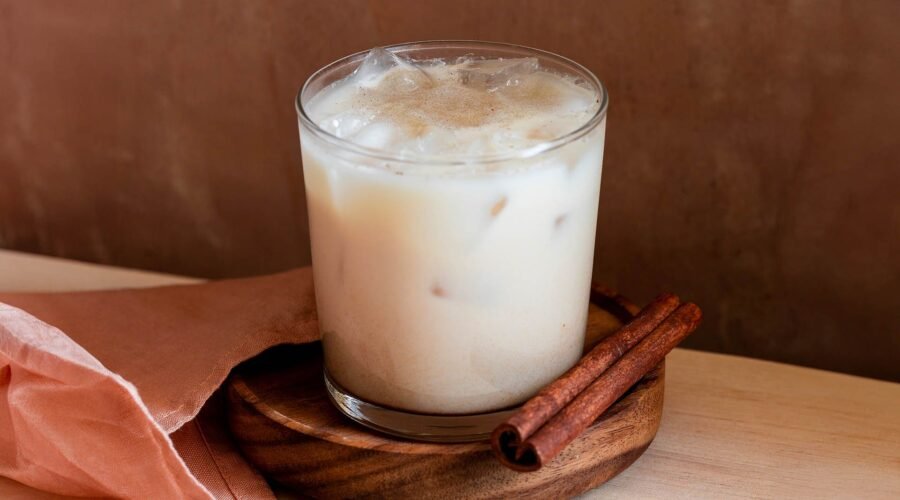Recipes: There Are Several Ways to Make Horchata. Almost All Are Correct.
Horchata means different things to different people. Popular in Latin America, Spain and Spanish-speaking communities worldwide, horchata is a creamy drink that can be made from nuts, seeds or grains, and flavored with all sorts of herbs and spices.
But beyond this broad definition, horchata can take on countless flavor profiles and identities. That’s thanks in part to the drink’s long, globe-trotting history. Some trace its origins to ancient Rome, saying that the term derives from the Latin word “hordeata,” which meant a barley-based drink. Others claim that Northern African Moors deserve the credit for Spanish horchata, since they brought its star ingredients to what’s now the Iberian Peninsula when they arrived in the 8th century.
“The origins are in Africa, and there are hundreds of variations,” explains Matt Diaz, the owner of For All Things Good, a cafe and molino with two locations in Brooklyn, New York. Ingredients and preparation methods vary by country and region. Spanish horchata, for example, usually starts with tiger nuts, while Mexican horchata features long-grain rice and Puerto Rican horchata uses sesame seeds. Ecuadorian horchata tends to be more of a tea-like beverage brewed from an array of herbs, flowers and other plants believed to have medicinal properties. In short, every horchata recipe is shaped by the community who makes it.
You May Also Like: America’s Hispanic Brewers Are Carving Out Space for Their Heritage
Types of Horchata
As previously stated, there are countless ways to make horchata, but here are some variations you might encounter in homes, restaurants and cafes across the United States.
Spanish Horchata
Spain’s version of horchata hails from Valencia, and many believe the concept originated among the area’s Moorish communities some 1,600 years ago. It’s made by soaking chufa, or tiger nuts, in warm water for at least four to six hours, then draining the solids and blending them with sugar and fresh water. Most people strain the drink again through a fine-mesh sieve so it’s super smooth before refrigerating and serving chilled.
Mexican Horchata
Mexican horchata combines long-grain white rice with water and cinnamon. After an extended soak, it’s blended then strained until silky. Many people add sugar or another sweetener like agave nectar; others stir in vanilla extract for flavor or sweetened condensed milk for extra creaminess. Either way, it’s typically served chilled over ice.
Puerto Rican Horchata
Sesame seeds form the base of Puerto Rican horchata. While some prefer the unadulterated taste of raw seeds, others toast them to create nuttier flavors. After an overnight soak, the softened seeds are blended with fresh water and white sugar or another type of sweetener. Some people also add vanilla, cinnamon, cloves, star anise or other spices to the blender to flavor their seed milk.
Ecuadorian Horchata
From southern Ecuadorian cities Loja and Cuenca comes a horchata that’s more akin to tea than nut or seed milk. Ecuadorian horchata is made by steeping a blend of 20 or so herbs and botanicals in water for five or more minutes, depending on their freshness, then filtering it through ice to retain a vibrant, Bordeaux-like color.
“In Ecuador, this beverage is believed to have healing properties,” says Jossimar Lujan, the restaurant and beverage director for Quito-based Metropolitan Touring. He’s seen it recommended for insomnia, digestive problems, kidney issues and more. Ingredients might include amaranth flower, lemongrass, mint, chamomile, lemon verbena and many others; some also add a squeeze of citrus to their brewed horchata to balance and brighten it.
You May Also Like: Craving Hot Chocolate? Try Mexican Champuraddo
How to Make Horchata
This recipe is inspired by Mexican horchata. It uses cinnamon for flavor, but you can customize it with vanilla, nutmeg and more.
Recipe by Emily Saladino
- ½ cup long-grain white rice
- 1 3-inch cinnamon stick, broken into pieces
- 3 cups water, divided
- ¼ cup granulated white sugar
- Ground cinnamon, for garnish (optional)
Step 1
Rinse rice in a fine-mesh sieve until water runs clear. Combine rinsed rice, 2 cups water and cinnamon stick pieces in a blender and blend to combine (the mixture will be watery with broken grains of rice and cinnamon shards). Pour into a large bowl, stir in the remaining cup of water and let sit, covered, at room temperature for 3 hours.
Step 2
Pour the mixture back into the blender with sugar and blend until smooth. Strain through fine-mesh sieve into a pitcher or large container; for smoothest results, repeat until no solids remain.
Step 3
Refrigerate until ready to serve or, serve immediately over ice in rocks glasses. Sprinkle top of each glass with ground cinnamon, if using.
FAQ
How to Drink Horchata
With a category this varied, there are few hard and fast rules. “It’s an anytime drink,” says Diaz. “It can be a meal replacement, and it’s a secret hangover cure.”
Nut- and seed-based horchatas are typically served cold and often over ice. Ecuadorian horchata can be served hot or cold all year long, Lujan says.
While it’s delicious on its own, horchata can also be added to other drinks. For All Things Good combines Mexican horchata with espresso to make vegan horchata lattes, while Los Angeles’s Guisados combines horchata with cold brew.
Is Horchata Usually Alcoholic?
Horchata isn’t usually alcoholic, but it certainly can be. Many people stir in rum, bourbon and other spirits. To spike a horchata you plan to serve cold, add your liquor of choice after the drink is chilled.
Can You Freeze Horchata?
You can freeze nut- or seed-based horchata, though the consistency will not be as creamy or the flavors as bright as freshly made versions. Pour the liquid into a freezer-safe container or airtight, zip-top bag for up to two months.
Published: November 27, 2023


